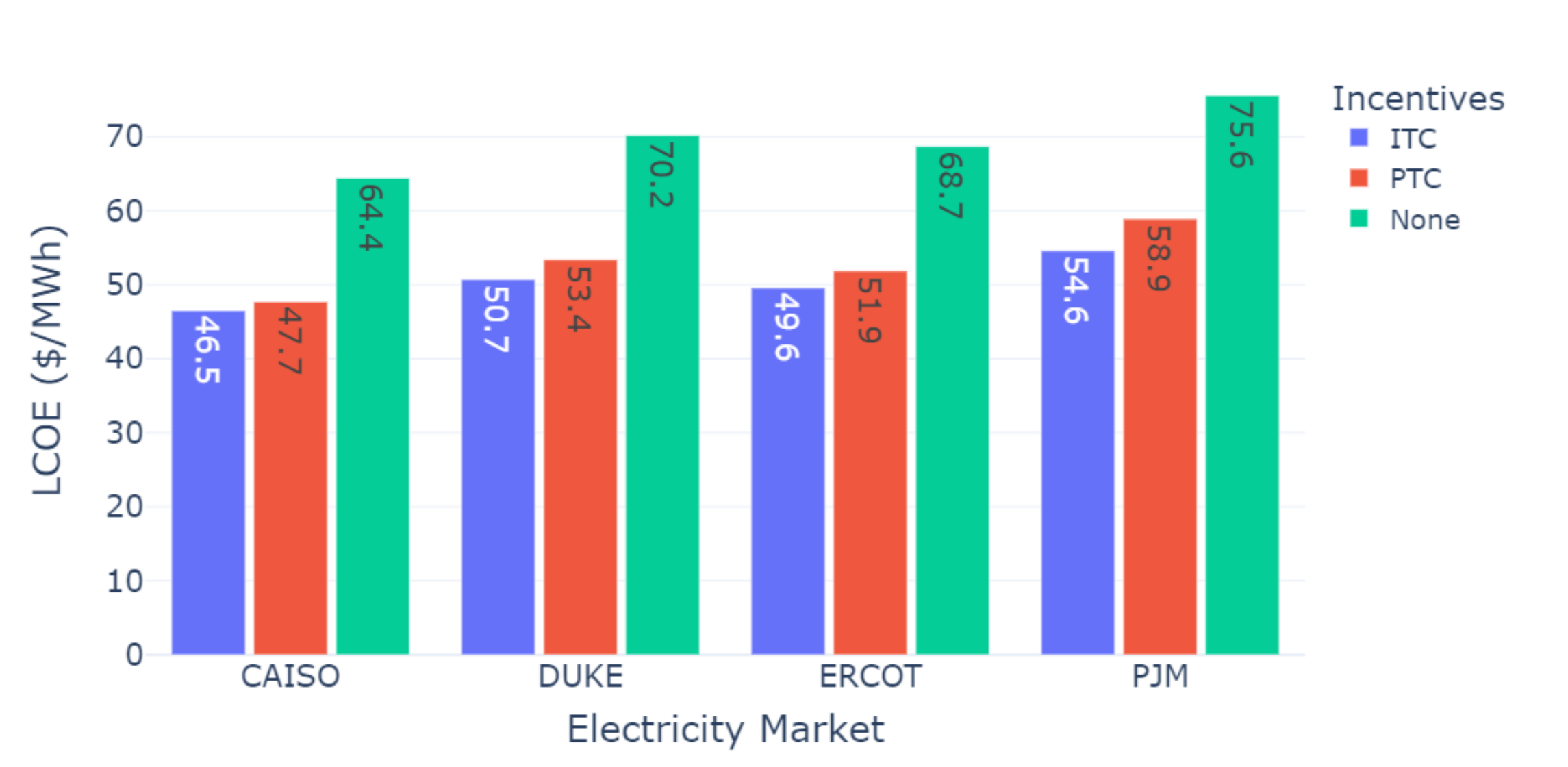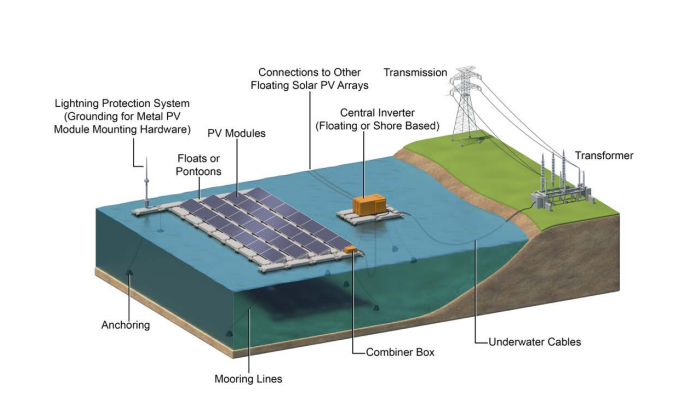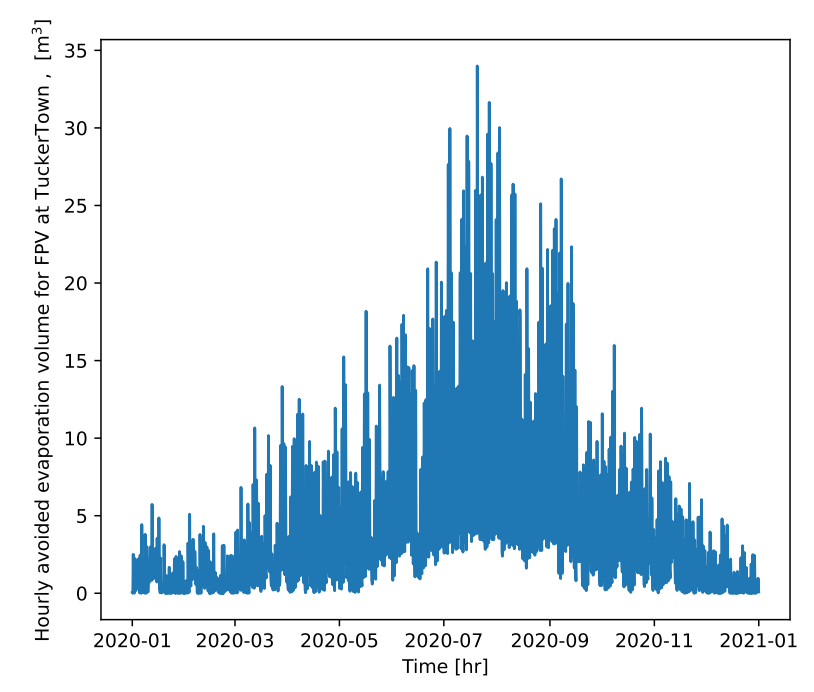

This page lists all the publications, datasets, and auxiliary tools that were used during the course of the project.
M. Sun, T. Phillips, T. Hussain and J. Gallego-Calderon,
"Techno-Economic Assessment of Electricity Market Potential for Co-Located Hydro-Floating PV Systems,"
2024 IEEE Green Technologies Conference (GreenTech), Springdale, AR, USA, pp. 96-100, 2024.
doi: 10.1109/GreenTech58819.2024.10520558.
Abstract: Harnessing renewable energy from diverse sources is paramount for sustainable power systems. Recently, co-located floating PV (FPV) systems present an intriguing prospect in this context. These hybrid systems, blending hydro and solar power, may offer a more consistent electricity output and potential economic advantages. Yet, assessing their actual potential requires a comprehensive techno-economic assessment. In addition, probabilistic price forecasting has recently gained attention in electricity market because decisions based on such predictions can yield significantly higher profits than those made with point forecasts alone. To this end, this paper embarks on a journey to elucidate the electricity market potential of co-located hydro-FPV systems in a probabilistic fashion to investigate the technological merits and economic viability of co-located hydro-FPV under different market structures. Our preliminary findings suggest that LCOE and payback metrics are sensitive not only to different markets but also to different solar incentives. Concurrently, we also observe that the payback period is generally faster with a production tax credit (PTC) than an investment tax credit (ITC). This assessment serves as a cornerstone for understanding the future prospects of co-located hydro-FPV systems in modern electricity markets.

E. Rosenlib, M. Rivers, and A. Levine.
"Floating Photovoltaic Technical Potential: A Novel Geospatial Approach on Federally Controlled Reservoirs in the United States."
Solar Energy, Volume 287, 2025.
doi: https://doi.org/10.2172/2375017
Abstract: Floating photovoltaic systems are a rapidly expanding sector of the solar energy industry, and understanding their role in future energy systems requires knowing their feasible potential. This paper presents a novel spatially explicit methodology estimating floating photovoltaic potential for federally controlled reservoirs in the United States and uses site-specific attributes of reservoirs to estimate potential generation capacity. The analysis finds the average percent area that is found to be available for floating photovoltaic development is similar to assumed values used in previous research; however, there is wide variability in this proportion on a site-by-site basis. Potential floating photovoltaic generation capacity on these reservoirs is estimated to be in the range of 861 to 1,042 GW direct current (GWdc) depending on input assumptions, potentially representing approximately half of future U.S. solar generation needs for a decarbonized grid. This work represents an advancement in methods used to estimate floating photovoltaic potential that presents many natural extensions for further research.

A. Levine, T. Curtis, L. Smith, and K. DeRose.
"AquaPV: Regulatory and Environmental Considerations for Floating Photovoltaic Projects
Located on Federally Controlled Reservoirs in the United States." National Renewable Energy Laboratory. 2024.
doi: https://doi.org/10.2172/2375017
Abstract: To meet the nation's decarbonization goals, the U.S. Department of Energy's Solar Futures study forecasts that installed solar photovoltaic (PV) capacity must increase nearly tenfold, from 80 gigawatts (GW) in 2020 to approximately 760 GW cumulative installed capacity by 2035. Ground-mounted PV is expected to dominate future solar deployment and will require more than 3.5 million acres of land to meet annual demand projections (of nearly 45 GW) by 2030. However, various competing demands for land (e.g., agricultural production, conservation) and high land acquisition costs in specific locations could be challenges to meeting future PV demand solely with ground-mounted PV deployment. Floating photovoltaics (FPV) may be an alternative in locations where ground-mounted PV is not feasible and aid in reaching the nation's PV deployment and decarbonization goals. FPV is a newer siting approach in which a PV array is affixed to a floating apparatus and sited on a water body like a reservoir behind a dam. FPV systems may be stand-alone or co-located at new or existing hydroelectric facilities or pumped storage hydropower (PSH) facility reservoirs. Co-located FPV systems may or may not be operationally paired and work in tandem with the hydroelectric or PSH facility. This report provides novel analysis to understand the opportunities and challenges associated with developing stand-alone and co-located FPV projects on reservoirs in the United States. Specifically, the report explores potential environmental and energy benefits and environmental impacts associated with the siting, construction, and operation of FPV projects. The report also identifies and analyzes U.S. federal- and state-issued permits and authorizations required by federal laws to understand the licensing pathways and regulatory requirements for FPV projects sited on reservoirs licensed by the Federal Energy Regulatory Commission and on powered and non-powered reservoirs owned by the Bureau of Reclamation or U.S. Army Corps of Engineers.

T. Hussain, T. Phillips, M. Sun and J. Gallego-Calderon,
"Impact of Floating PV (FPV) System on Water Evaporation: Case Study of an Open Loop Reservoir in North Carolina,"
2024 IEEE Kansas Power & Energy Conference (KPEC), Manhattan, KS, USA, 2024.
doi: 10.1109/KPEC61529.2024.10676208
Abstract: Fresh water scarcity is becoming one of the important concerns worldwide. This situation of water scarcity is further exacerbated by the increase in water evaporation due to climate change. This manuscript will address this concern by considering the impact of floating photovoltaics (FPVs) systems on water evaporation. The installation of PV modules on the water bodies can help reduce the water evaporation rate from reservoirs by reducing the evaporating area of the water surface. This work evaluates the effect of FPV on water evaporation rates in the TuckerTown reservoir located in North Carolina state of United States. Meteorological data, such as mean temperature and dew-point, are used to calculate the rate of the water evaporation by Linacre method. The simulation results for the TuckerTown case study showed that the aggregated avoided evaporated volume for one year is 9 million gallons.

E. Rosenlieb, A. Levine, M. Rivers, T. Phillips, T. Hussain, J. Gallego-Calderon, and M. Sun,
"AquaPV: Foundational Analysis and Industry Guidance on Floating PV Results,"
Open Energy Data Initiative (OEDI), 2024.
doi: https://data.openei.org/submissions/6234
This dataset contains results of the technical potential analysis of floating photovoltaics (FPV) on federally owned or permitted reservoirs in the United States. Estimates of the area of reservoirs that is technically feasible for FPV development are provided for reservoirs that are owned by the US Army Corps of Engineers or the US Bureau of Reclamation, or are associated with hydropower dams licensed by the Federal Energy Regulatory Commission. Other associated data are included, such as estimates of the potential evaporative losses of FPV development, and whether the waterbody is associated with an energy community or disadvantaged community that could qualify it for investment or production tax credits. Data is provided both as a spreadsheet and in a geospatial format including the waterbody geometries.
